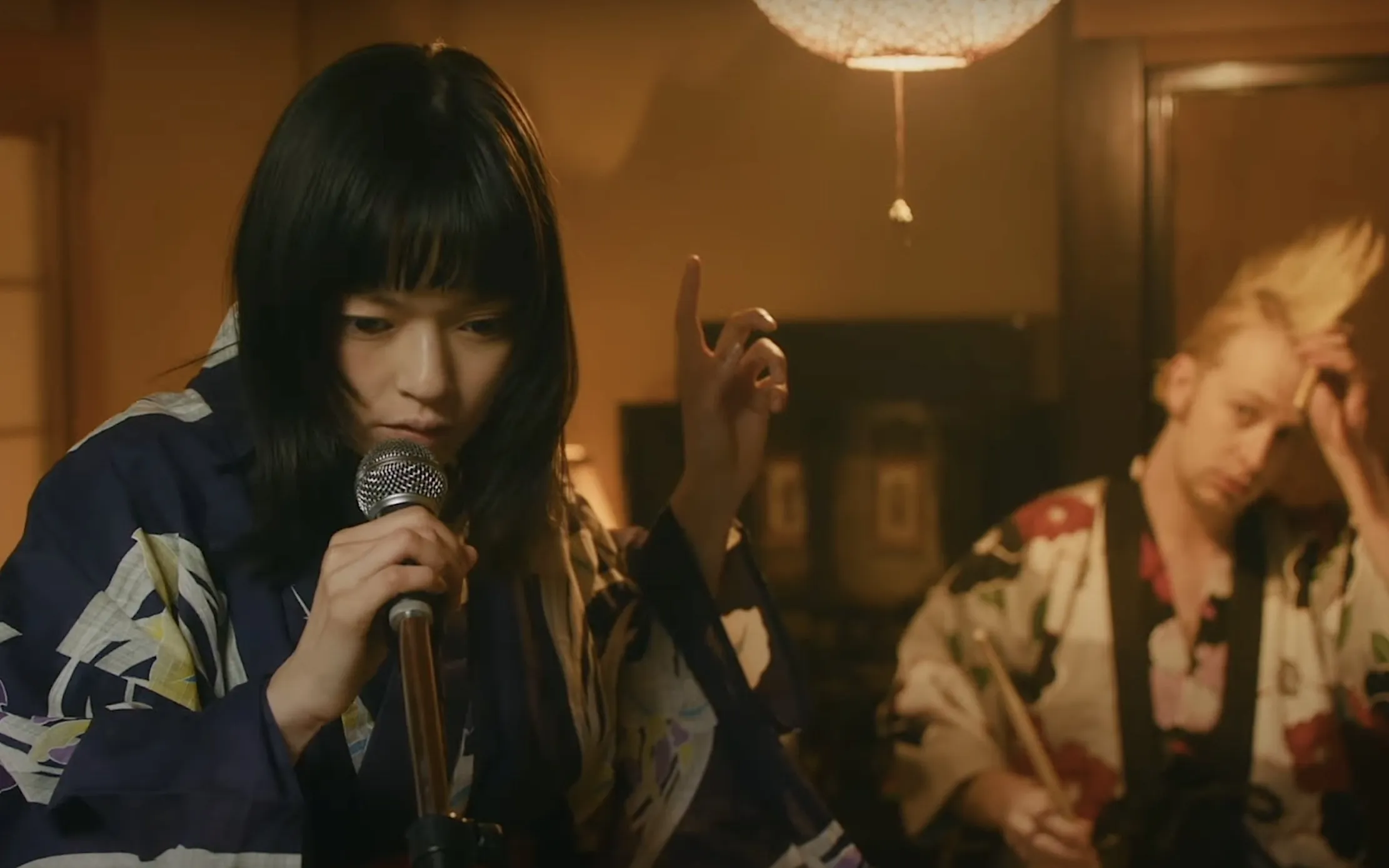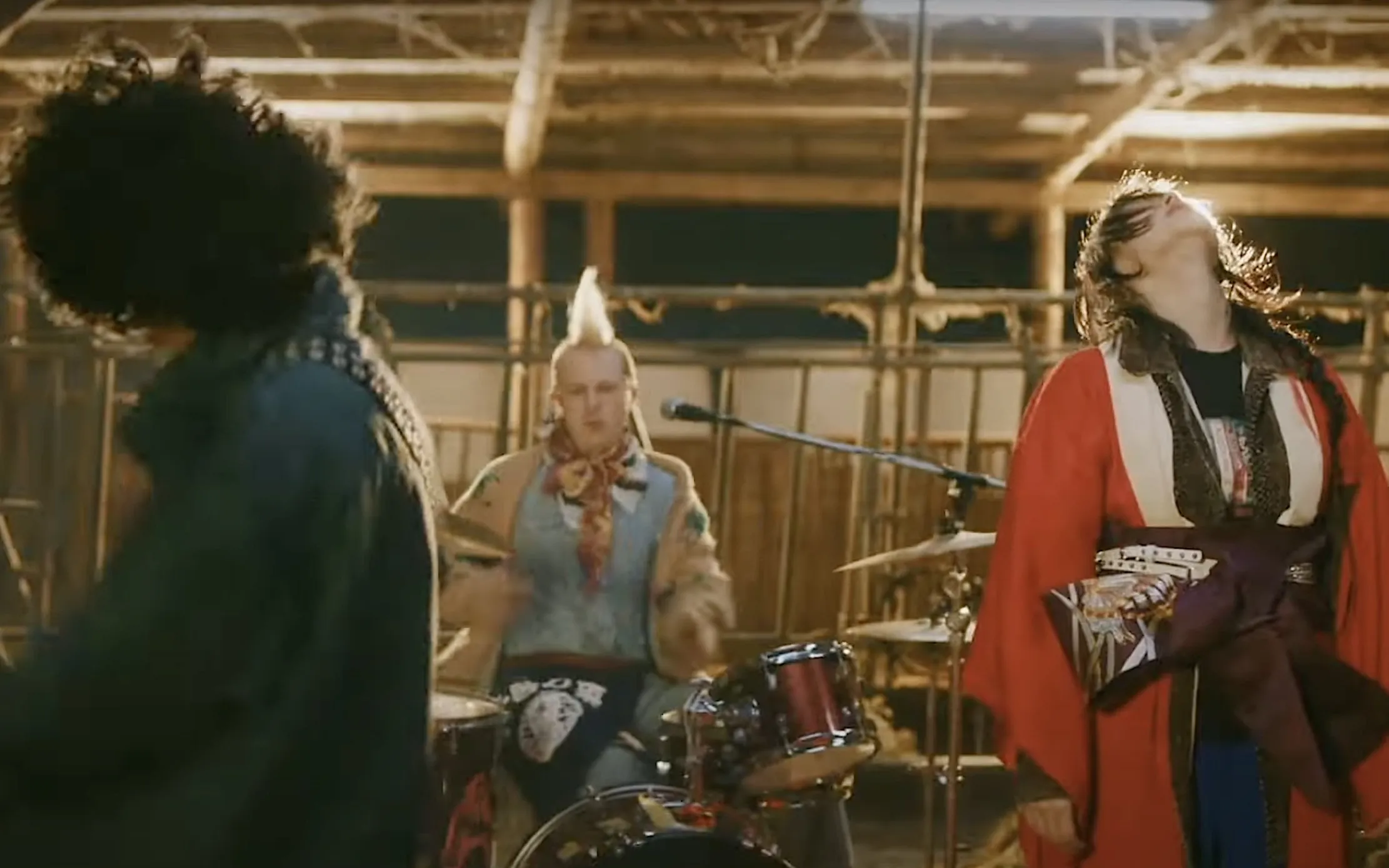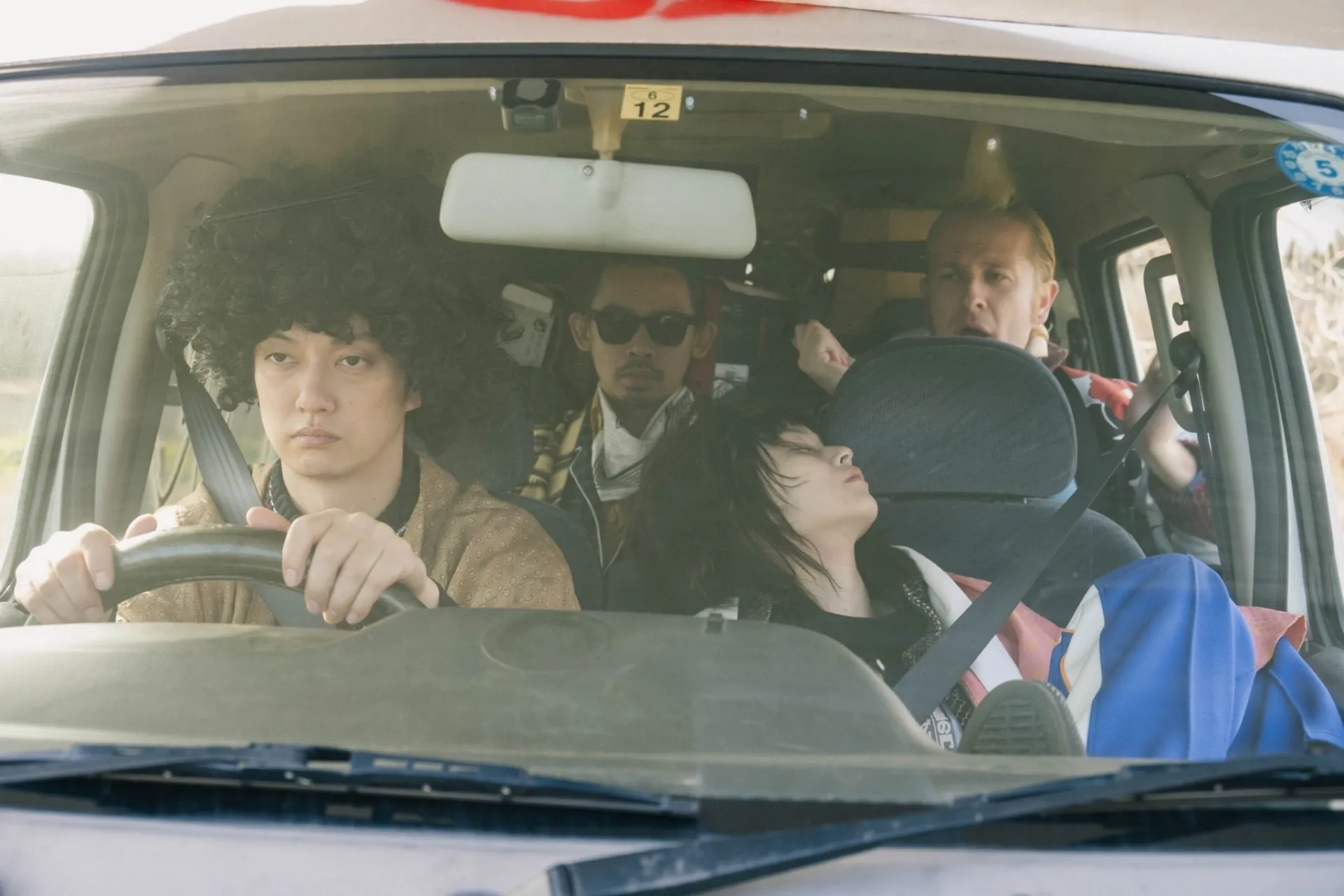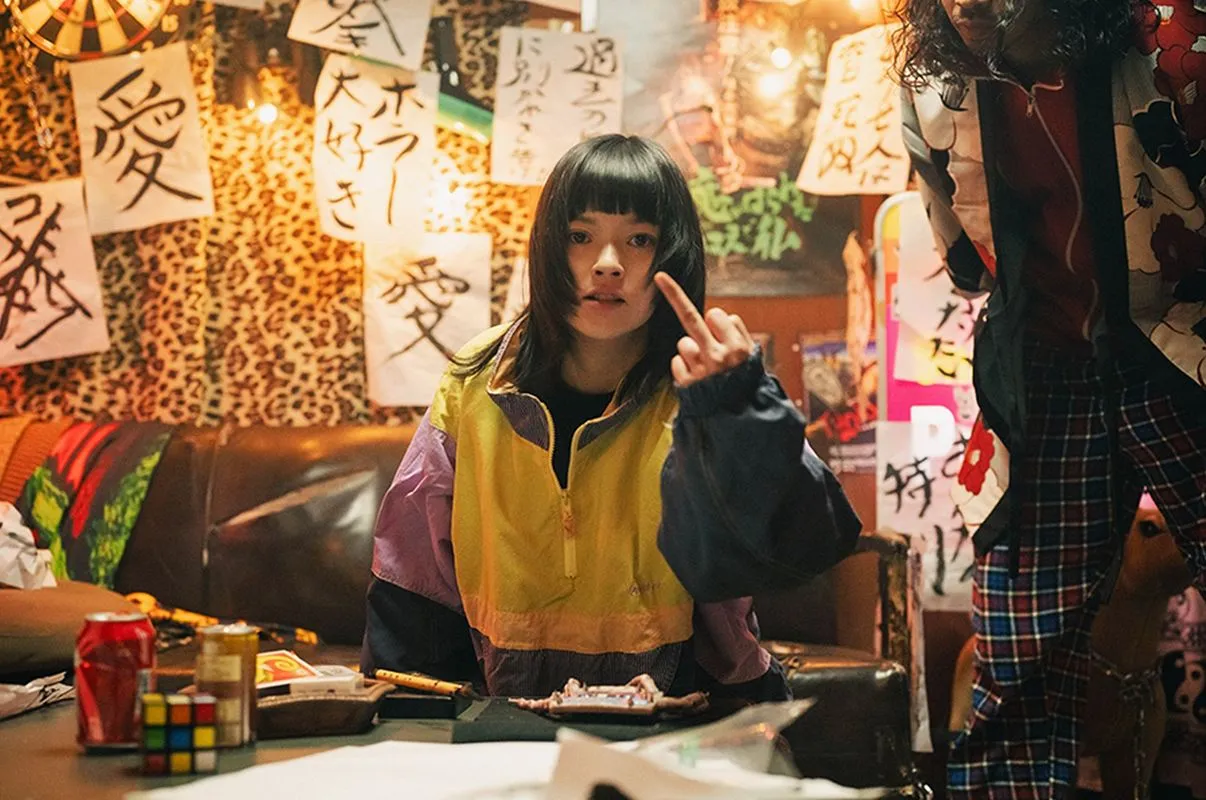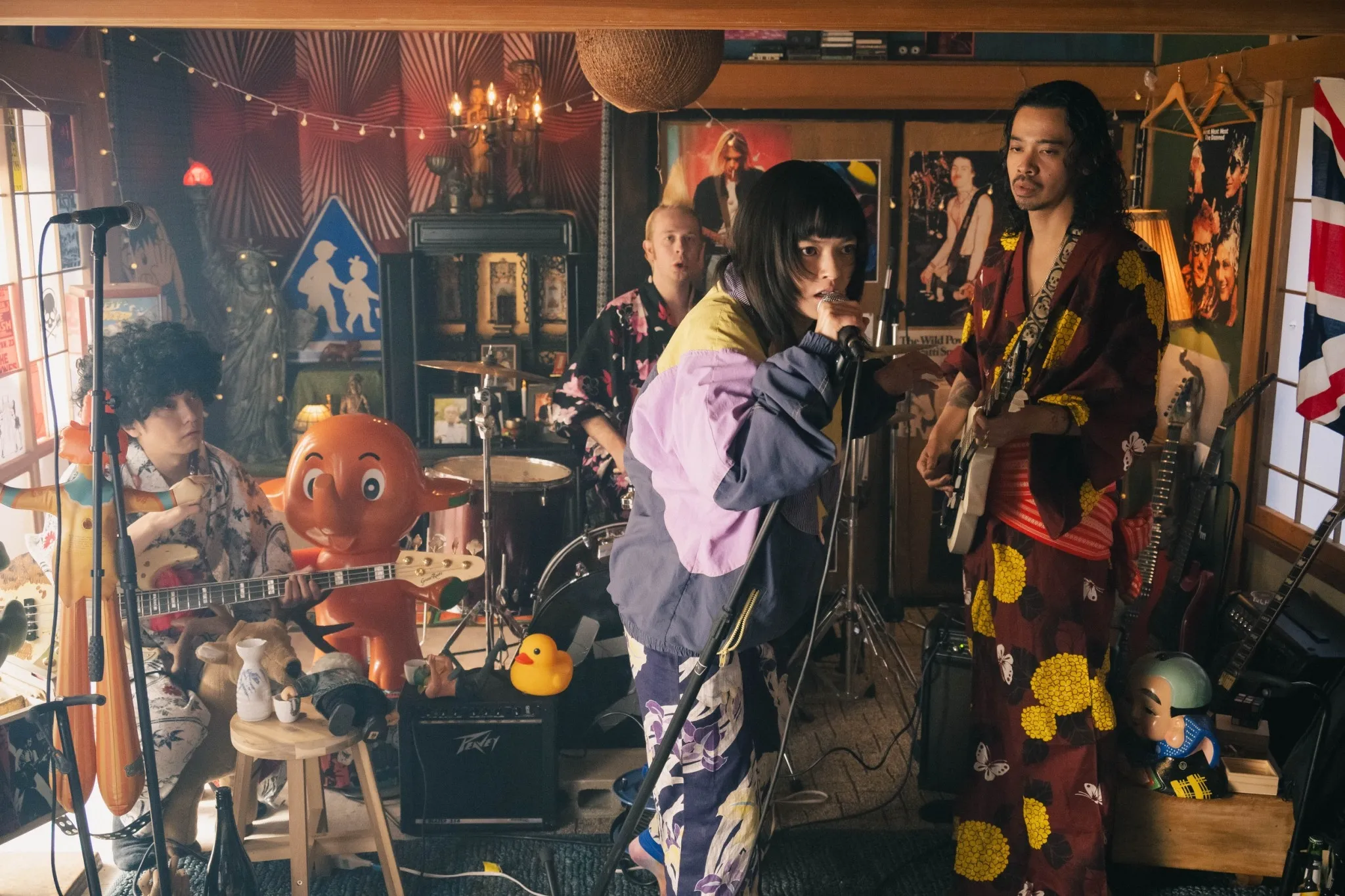Kenichi Ugana’s deliciously unusual film “The Gesuidouz,” a cinematic trip that defies conventional storytelling and musical storylines, combines punk rock with magical realism. This isn’t your average band drama; it’s a wonderfully imaginative examination of creativity, survival, and artistic expression that combines sardonic wit with unexpected emotional depth.
Hanako, a 26-year-old lead singer with an unusual mission, is at the heart of the story. She’s convinced she’ll die at 27, joining the notorious 27 Club alongside heroes like Jim Morrison and Kurt Cobain, and she’s desperate to create musical magic before her self-imposed deadline. Her band, The Gesuidouz (meaning “guesthouse”), is a misfit foursome that specializes in horror-themed punk music, emphasizing raw passion above polished performance.
Ugana, known for his bold approach to indie filmmaking, has crafted a narrative that straddles the line between absurdist comedy and serious artistic reflection. When the band faces the possibility of losing labelmates owing to weak record sales, they are given a unique lifeline: relocation to a rural farm, where they must create their breakout hit or fade into obscurity.
The film elevates what could have been a normal music industry narrative into something more intriguing: a bizarre investigation of artistic struggle with aspects of magical realism, such as an advice-giving Shiba Inu and sentient musical cassette recordings. It is a love letter to creativity that embraces the messy, unpredictable art creation process, demonstrating that inspiration may emerge from the most unexpected places.
Punk Rock Rebellion Meets Rural Reinvention
The Gesuidouz is more than just a band; they’re a musical Hail Mary pass for creative despair. Led by Hanako, a 26-year-old vocalist with a pathological infatuation with the 27 Club, the band is on the verge of musical extinction. Their album sales are disastrously poor, and their manager is ready to dump them faster than a broken guitar string.
But Hanako will not go down without a fight. She is obsessed with the great rockers Jim Morrison and Kurt Cobain, who died at 27 and sees her upcoming birthday as both a deadline and a destiny. What’s her plan? Create one huge song before maybe staging her dramatic musical farewell.
The band’s redemption arrives unexpectedly: a rural farm relocation program. Their manager offers them a lifeline: live and work on a farm in the country for a year, with the challenge of creating a breakout song. The Gesuidouz, packed into a beat-up truck with unsold LPs and heaps of hope, leave Tokyo’s tumultuous music industry for agrarian anonymity.
This isn’t the ordinary band retreat. The farm transforms into a weird, creative incubator with surreal features that challenge conventional storytelling. A talking Shiba Inu named John Cage is an odd muse, giving philosophical gems that fuel musical inspiration. Sentient cassette tapes materialize. The farm owner’s sweet elderly mother, who doesn’t understand punk but is interested, provides an unexpected support system.
The band’s creative process is messy, humorous, and profoundly human. They’re not virtuosos creating faultless tunes but rather artists combining ideas in the hopes that something spectacular will develop. Through frustration, absurd moments, and genuine connection, they gradually transform from struggling artists into something unexpectedly powerful.
Sonic Misfits: The Souls Behind the Sound
Hanako emerges as a beguiling enigma, both chilly and tender. Her performance vibrates with a sad energy that is both alienating and captivating. At 26, she is fascinated with the fabled 27 Club. She sees her impending death as a romantic punk rock narrative rather than a tragedy. Her character does more than just sing music; she represents a complex psychological environment in which creativity, mortality, and rebellion intersect.
Despite her supposedly detached appearance, Hanako has breathtaking moments of warmth. Her friendship with the farm’s elderly mother is an unexpected emotional anchor, proving her ability to make true human connections despite her punk rock façade. She’s skilled with a power drill, metaphorically and slicing through bureaucratic red tape, exhibiting a ferocious determination that drives the band’s existence.
The band members form a delightfully mismatched multi-ethnic ensemble. Leo Imamura (guitarist), Yutaka Kyan (bassist), and Rocko Zevenbergen (drummer) are not just musical accompaniments but also important storytelling aspects. Each contributes a unique energy: Imamura’s calm intensity, Kyan’s rhythmic accompaniment, and Zevenbergen’s percussive unpredictability. They convert from struggling musicians to a close-knit creative unit bound by their common desperation and dream.
The manager, Yuya Endo, serves as both an opponent and an unexpected ally. His ultimatum isn’t a death sentence but a strange lifeline: relocate the band to a rural farm and face the challenge of creating a hit. He recognizes their potential despite appearing to ignore them.
The elderly mother unexpectedly becomes the narrative heart. Though she doesn’t understand the band’s punk aesthetic, her sincere interest and support serve as a symbolic nurturing force, transforming their raw potential into something meaningful.
These characters dismantle and reassemble the fundamental concept of artistic creation, turning “The Gesuidouz” into a profound investigation of creativity, connection, and survival. They do more than just tell a story.
Sonic Rebellion: Creativity, Mortality, and Musical Mythology
“The Gesuidouz” converts the creative process into a raw, unpredictable adventure that differs from the romanticized artistic narrative. Creativity here isn’t about sudden inspiration but constant battle – hammering ideas together, failing again, and finding meaning in messy in-between areas. The band’s search for a breakout hit becomes a metaphor for artistic survival, as inspiration springs from desperation, farm work, and unexpected connections.
Hanako’s obsession with the 27 Club is more than just a sick fascination; it profoundly reflects their artistic legacy. She transforms mortality into a creative fuel by embracing the charisma of young musicians like Jim Morrison and Kurt Cobain. Her view that excellence is inextricably linked to a tragic, brief existence echoes the punk rock ethos of burning brightly and quickly.
Punk music and horror films share more than just aesthetic qualities. They are countercultural expressions of societal disillusionment. Based on horror film themes, the band’s music evolves into a rebellious language that is raw, frightening, and intensely personal. Their aural world violates conventional preconceptions, making music a psychological resistance form.
The film wonderfully deconstructs these topics using strange elements such as talking cassette tapes, an advice-giving Shiba Inu, and mystical moments that blur the limits of reality. These aren’t just amusing additions; they’re meaningful comments on artistic expression’s non-linear, often unexplained nature.
Finally, “The Gesuidouz” embraces creativity as a communal, messy, genuinely human experience in which inspiration can emerge from the most unexpected places. Art is less about perfection and more about genuine expression.
Cinematic Alchemy: Ugana’s Punk Rock Storytelling
“The Gesuidouz” is directed by Kenichi Ugana, who alternates between stone-faced comedy and profound emotional landscape. His signature deadpan humor is like a surgical instrument, precise and unexpected, capable of unveiling deeper realities behind seemingly ludicrous surface tales.
The screenplay comes to life with its magical realism, bringing elements that might appear absurd in lesser hands. A talking Shiba Inu giving songwriting guidance, sentient cassette tapes producing musical singles – these aren’t just amusing gimmicks but sophisticated narrative tools that challenge traditional storytelling. Ugana handles these bizarre moments with surprising ease, allowing them to exist without being overly explained, paradoxically making them more interesting.
Ugana’s technique draws inspiration from directors such as Aki Kaurismäki and transforms potentially depressing moments into something unexpectedly compassionate. The film’s humor isn’t about getting cheap laughs but creating emotional space for complicated feelings to emerge naturally. Each scene feels like a perfectly arranged musical arrangement, with seemingly random components that create a cohesive, meaningful whole.
The narrative format intentionally destroys fourth walls, with characters addressing and speaking directly to the camera. This strategy shifts the viewing experience from passive observation to active participation. The cinematography, which is both quiet and dynamic, distant and intensely personal, takes on a new character. This watchful eye encourages the band to regain its creative soul.
Ugana has created punk rock poetry on creativity, survival, and the beautifully chaotic nature of artistic expression, as well as film.
Visual Rhythms: Capturing Punk’s Surreal Essence
The cinematography of “The Gesuidouz” is a rebellious dance between restraint and explosion, expressing the punk ethos with beautifully crafted visual language. Bright yet subdued color schemes create a distinct visual tension, similar to controlled auditory feedback that is constantly on the verge of erupting into complete pandemonium.
The camera becomes more than just an observer; it takes an active role in the narrative. It begins as a journalist’s lens and progressively morphs into a strange, nearly intelligent entity. Crash zooms highlight moments of creative inspiration by dramatically closing in on band members’ faces with a raw, emotional force reminiscent of musical crescendos. These techniques transform cinematography into visual percussion that complements the band’s sound world.
Magical realism permeates the visual narrative. The talking Shiba Inu and sentient cassette tapes are not abrupt disruptions but organic extensions of the film’s strange logic. These aspects are portrayed with such deadpan matter-of-factness that they become deep rather than humorous, serving as visual metaphors for the unpredictable nature of creativity.
The visual style embraces contradictions: distant and close, calm and active. Wide images of the rural farm are juxtaposed with tight close-ups, creating a rhythm that reflects the band’s musical journey. Ugana’s visual style transforms commonplace occurrences into beautiful visual statements, with each frame seeming like a well-crafted musical note.
The cinematography ultimately becomes the story, turning visual composition into its form of punk rock rebellion rather than just documenting it.
Sonic Screams: Musical Rebellion and Cinematic Nightmares
The Gesuidouz don’t just play music; they weaponize it. Their punk rock style transforms into a living, breathing character that runs through the film’s veins. Each song is a sonic insurrection, crafted with the enthusiasm of a power drill and the accuracy of a horror film score.
Their musical identity is deeply based on Hollywood horror cinema, with genre references transformed into raw musical fire. It’s about creating entire narrative worlds with music, not just sound. Each track sounds like a warped love letter to horror cliches, revisiting cinematic nightmares via punk’s angry lens.
The band’s musical moments are electrifying, springing from unexpected sources of inspiration. Instruments become extensions of the band members’ emotional landscapes, resulting in catchy compositions that are both chaotic and precisely built. When they play, it’s more of an exorcism than a performance, as they use music to purge creative demons.
The soundtrack blurs the distinction between musical performance and narration, turning each song into a complicated narrative statement. Horror and punk collide, creating a distinctive aural language that speaks to outcasts, rebels, and those who discover beauty on the fringes of conventional musical expression.
The Review
The Gesuidouz
"The Gesuidouz" is a remarkable cinematic anomaly that defies standard storytelling by combining punk rock rebellion, magical realism, and existential meditation into a singularly compelling experience. Kenichi Ugana has created more than just a music film; he has crafted a profound investigation of mortality, creativity, and artistic survival. The film succeeds magnificently where others may fail, transforming potential melodrama into a deadpan, surreal, humorous, and deeply poignant journey. Hanako's rich character, the band's raw energy, and the unexpected rural environment combine to create something unique. Its ability to mix humor, emotional depth, and a genre-bending narrative distinguishes it as an outstanding work of contemporary Japanese film. While not a classic crowd-pleaser, "The Gesuidouz" will appeal to individuals who value unorthodox storytelling, punk culture, and films that challenge narrative assumptions.
PROS
- Innovative narrative approach blending magical realism with punk rock culture
- Exceptional cinematography that captures both humor and emotional depth
- Nuanced performance by Natsuko as Hanako
- Unique exploration of artistic creativity and mortality
- Clever integration of horror film references with musical storytelling
CONS
- May be too abstract for mainstream audiences
- Unconventional narrative structure might confuse some viewers
- Surreal elements could feel disconnected for viewers expecting linear storytelling









































